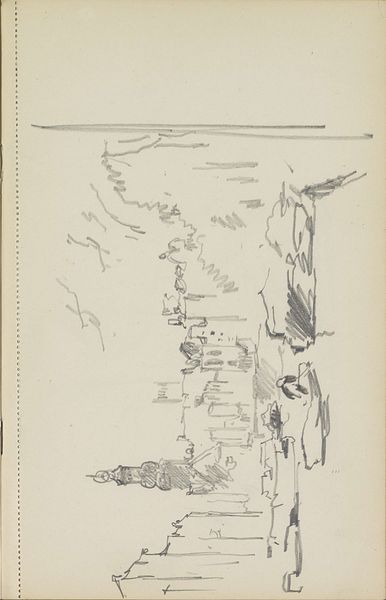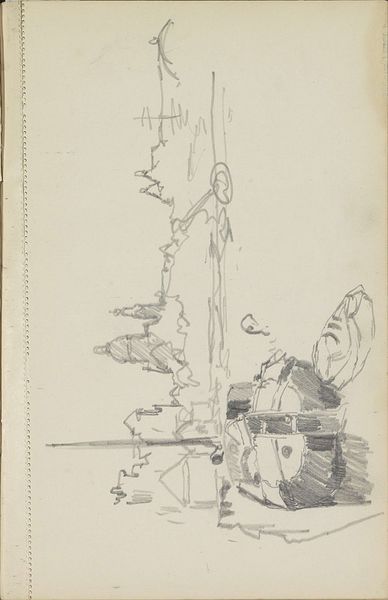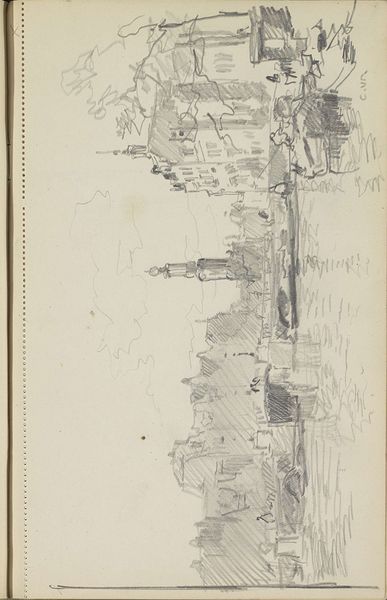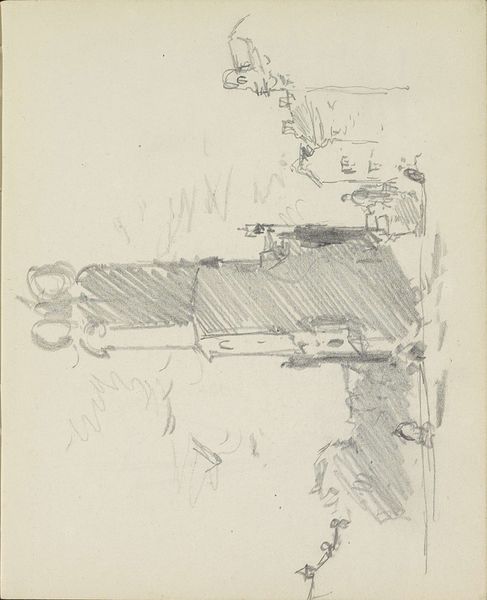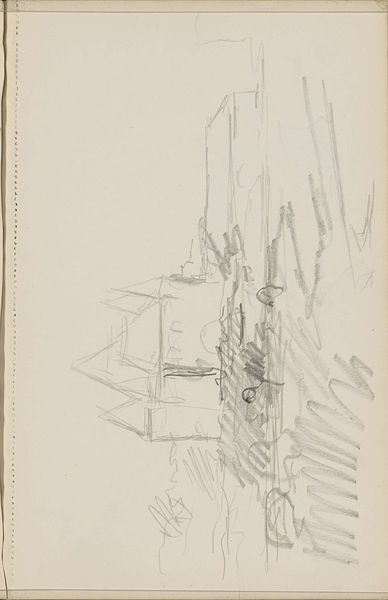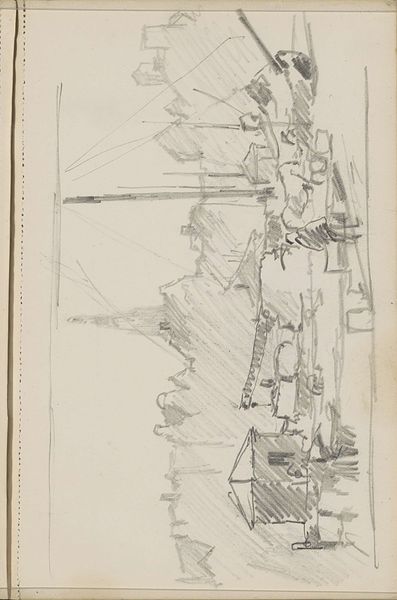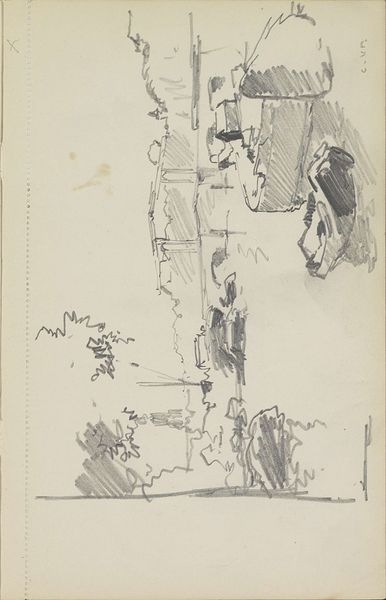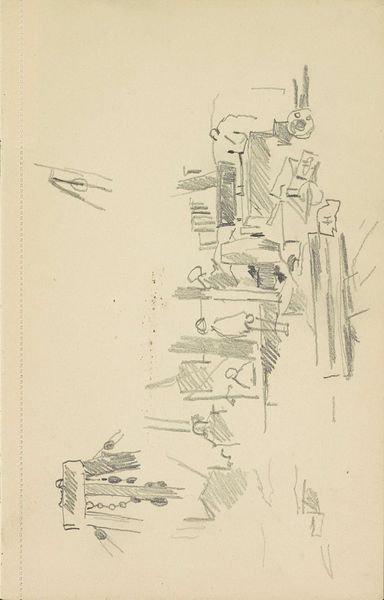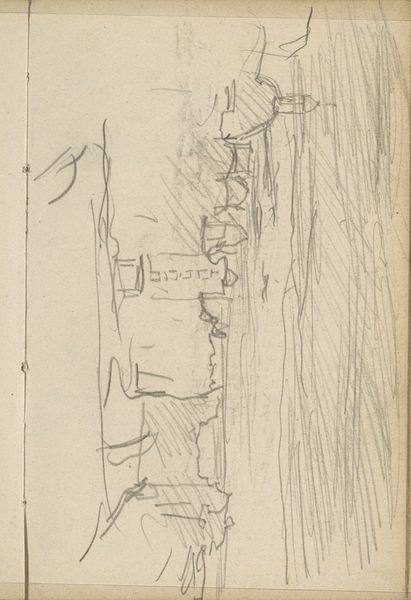
Copyright: Rijks Museum: Open Domain
Editor: So, this is "Boats on a Canal" by Cornelis Vreedenburgh, probably made sometime between 1890 and 1946. It's a pencil and ink drawing housed at the Rijksmuseum. It has a kind of fleeting, impressionistic feel to it. What do you see in this piece? Curator: I see an interesting moment of artistic production. These sketches, particularly from this period, reflect an impulse to capture everyday life, moving away from grand narratives towards scenes of urban development. Think about how industrialization reshaped the landscape and how artists like Vreedenburgh documented those evolving realities. Do you think that this sketch embraces or critiques those changes? Editor: I think it's observational more than critical. There’s almost a documentary quality, just recording a slice of life. But, if this was intended as preparation for a larger piece, it could be interpreted in different ways, right? Maybe the finished artwork added the critique. Curator: Exactly. This "slice of life," as you say, connects to the broader social context. Canal scenes in the Netherlands, were loaded with historical, political and economic significance. So, what would it have meant to choose this as subject matter? How might the rising middle class have viewed a drawing like this? Editor: Hmm, good point! The rising middle class… maybe they would’ve appreciated seeing the everyday rendered as art, something familiar. It makes you wonder how accessible the canal-ways actually were in this time and what is was like to traverse. Curator: Precisely. Think of how railroads and canals transformed both trade and leisure. Did the location influence his sketch? Perhaps the artist frequented this location often or only occasionally? How does that consideration change how you interpret the finished drawing? Editor: This makes me think of how photography changed art – artists had to find new roles, focusing on interpretation and personal vision over just documentation. I had not considered that. Curator: Yes! It gives us a much clearer view on how society can influence the artist's process, intentions, and eventual outcome of works like this. Editor: It really does! I appreciate getting a deeper sense of the social history embedded in this seemingly simple sketch.
Comments
No comments
Be the first to comment and join the conversation on the ultimate creative platform.
